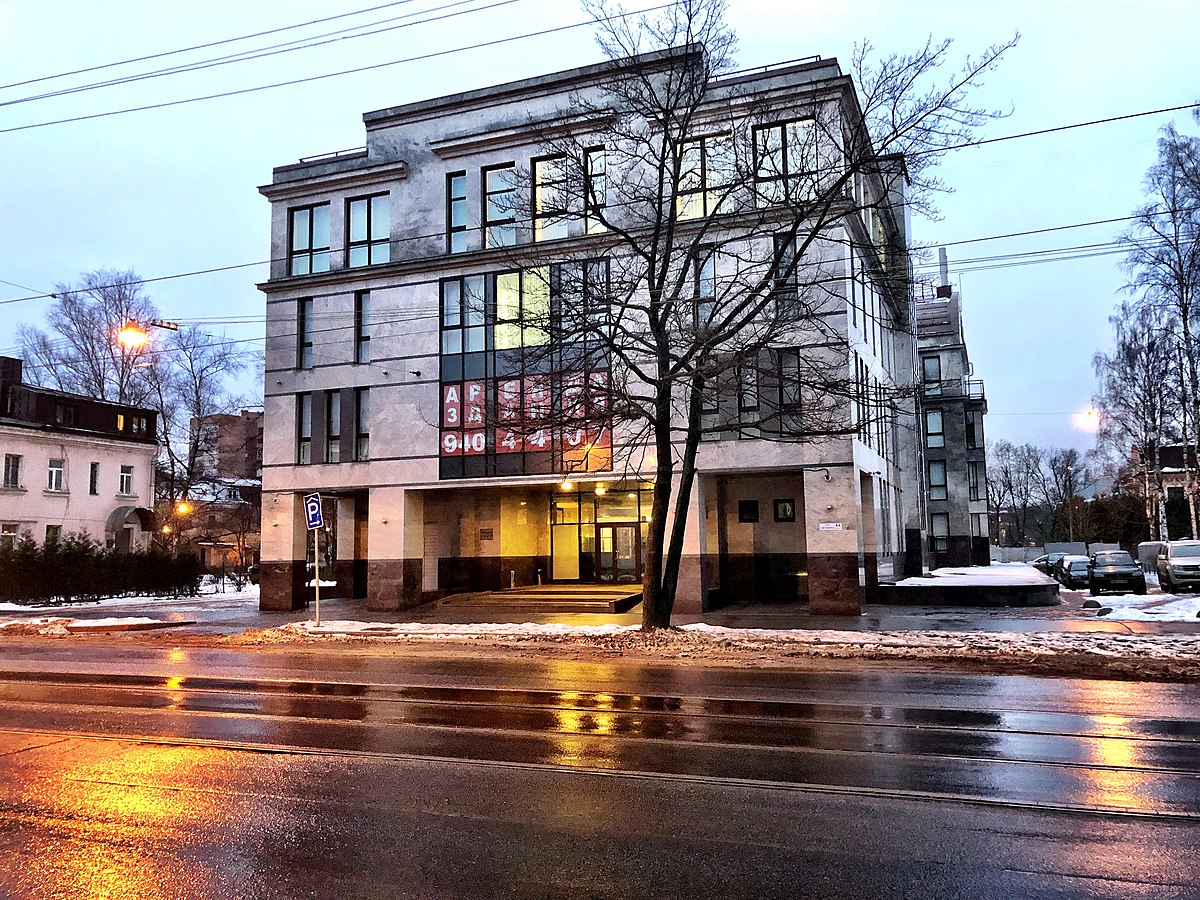 Public Domain. The Internet Research Agency/Russian "troll factory" building
Public Domain. The Internet Research Agency/Russian "troll factory" building
The Disinformation War
With the 2020 U.S. election’s adjacency to the pandemic, it was no surprise that Russian Military Intelligence (G.R.U.) moved to amplify false U.S.-centric narratives about the coronavirus in order to influence the election. These actions reflect similar methods used during Russia’s 2016 activities. In an effort to deflect blame from its bungled response and exploit potential gains in influence from the pandemic, China followed suit.
State-sponsored disinformation campaigns, especially regarding pathogenic and biological warfare threats, are nothing new to the global stage; as seen particularly emanating from the U.S.S.R. during the Cold War era. The following list briefly highlights previous bioterrorism-related disinformation campaigns perpetrated against the U.S. :
- A 1952 disinformation campaign, bolstered by North Korea, China, and the U.S.S.R., claimed that the U.S. had used biological weapons, in the form of disease-carrying insects, during the Korean War. The goals of this campaign were to increase anti-American sentiment and to deter U.S. involvement in the war.
- In 1981, Cuba, a Soviet-aligned country, accused the CIA of spreading a new strain of dengue fever in order to sabotage the communist state.
- In 1982, the expulsion of the American head of a malaria research center in Pakistan came as a result of a Soviet campaign claiming that the lab was breeding Malaria-infected mosquitos for biological warfare campaigns directed at Afghanistan and Cuba.
- Operation Denver, a KGB and Stasi coordinated campaign, was one of the most successful state-sponsored disinformation operations of the Cold War period. The operation sought to spread the idea that AIDS was genetically-engineered by the Pentagon as an effort to strengthen anti-American sentiment and expose the U.S.’ attitudes towards biological weapons as “out of control,” possibly as a strategic shift to push for arms control because of the costly arms race.
Russian and Chinese Disinformation Goals and Methods
Russia, lacking strength in traditional instruments of national power, has increased investments in disinformation programs as a means to achieve foreign policy goals and weaken cohesion amongst oppositional alliances such as NATO. The utilization of social media platforms has been widely used to disseminate “weaponized” narratives. The overarching goal of Russian disinformation operations is to create confusion and distrust within democratic societies in order to weaken foreign potential resolve against Russian policies.
While Beijing has traditionally stayed away from the brash, conspiratorial disinformation tactics inherent to Russian disinformation campaigns, the potential to exploit the pandemic has caused its operational approach to mirror Kremlin tactics. China’s operations focus on promoting good publicity for the CCP, accomplished by diplomatic arm-twisting and broadcasting investments in the developing world, as a means to improve its global reputation and influence. The overarching goal of China’s strategic informational shift seems to be an effort to slyly strong-arm its way to the mantle of leadership amongst global powers.
Though disinformation campaigns vary in procedure, most successful ones, according to Clint Watts, are embodied by three layers:
- A state-sponsored news outlet (such as Russia Today or Global Times) to legitimize narratives
- Alternative media outlets that are usually short of traditional journalistic standards
- Covert personas and agents of influence, such as fake social media accounts, front organizations or embedded personalities, who help promote these narratives
Impacts on U.S. National Security
Tools of disinformation, especially as utilized by authoritarian regimes, can work to degrade the fundamentals of democratic societies: trust in institutions, a free media, civil society, and of course, trust in free and fair elections. Disinformation also undermines the confidence of scientific knowledge and public health institutions, crucial elements necessary to mitigating public health threats.
The propagation of disinformation, especially to U.S.-allied states and regions crucial to global strategic competition, could work towards increasing Russian and Chinese spheres of influence while negatively impacting the U.S.’ standing in the world as a global leader and cooperative partner. The potential consequences might impact, amongst other things, the U.S.’ ability to deter future public health or bioterrorism threats. After all, false narratives are difficult to fully correct and in the case of a pandemic, could increase the difficulty in the international cooperation necessary to slow the spread of the disease.
The current digital climate has also fundamentally changed disinformation campaigns. In his book, Active Measures: The Secret History of Disinformation and Political Warfare, Thomas Rid indicates that the internet has made disinformation operations less costly, faster, and more impactful; though at the same time harder to control and measure, increasing the risk of collateral damage down the line. This is what could make disinformation operations tailored to the exploitation of a pandemic particularly dangerous. The upfront costs, which are maliciously targeted, are devastating enough; but the backend costs, unpredictable in nature, could reverberate at a time least expected or wanted.
As of yet the U.S. has not operationalized a coherent strategy to counter disinformation, but if recent years have been any indication of the threat posed by these operations, adaptation to this new playing field will be crucial for U.S. security in the years to come.





